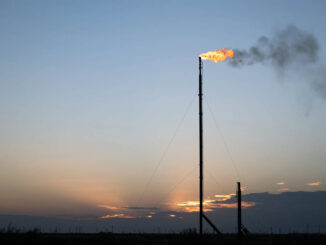
Norway, Europe’s leading natural gas supplier, is gearing up for its most significant oil and gas licensing round in years, signaling a renewed push to bolster exploration and production amid ongoing global energy demands.
The Norwegian government has announced preparations for the 26th licensing round, focusing on frontier areas unexplored since 2021, with invitations for bids in the predefined areas (APA) 2025 round due by September 2, 2025.
This move includes expanding the offering to 76 blocks, primarily in the Barents Sea and Norwegian Sea, marking the largest-ever exploration acreage made available.
Officials anticipate a 5.2% increase in oil liquids production in 2025, partly driven by new developments like the Johan Castberg oilfield.
As Energy Minister Terje Aasland prepares to launch this initiative, it underscores Norway’s strategic pivot in the energy sector, shaped profoundly by recent geopolitical events.
A Historical Shift: From Phase-Out to Expansion
Norway’s oil and gas industry has a storied history dating back over 50 years, beginning with the discovery of the Ekofisk field in 1969 and evolving into a cornerstone of the nation’s economy.
By the early 2020s, the sector accounted for substantial value added, government revenues, investments, and exports, making Norway one of the world’s top crude producers.
Prior to Russia’s full-scale invasion of Ukraine in February 2022, Norway was on a trajectory toward reducing its reliance on fossil fuels. The country emphasized renewables, with policies aimed at phasing out oil and gas exploration in favor of sustainable alternatives, aligning with global decarbonization goals.
Licensing rounds in frontier areas were postponed in 2022 as part of a coalition agreement, reflecting a domestic push toward energy transition.
The war dramatically altered this landscape. As Europe imposed sanctions on Russian energy imports, Norway stepped in to fill the void, overtaking Russia as the continent’s largest natural gas supplier.
In 2022, Norway ramped up production and exports, providing over 33% of the EU’s gas imports by 2024, alongside suppliers like the United States and Algeria.
This surge led to record profits—estimated at an additional boost from higher prices and output since 2022—drawing accusations of war profiteering from some quarters.
Petroleum sales tripled in value from 2020 to 2021 alone, with further windfalls post-invasion.
By 2023, Norway’s state-owned Equinor had quietly become a dominant force in Europe’s gas market, benefiting from elevated prices compared to pre-war Russian supplies.
This expansion reversed earlier shutdown trends, prioritizing energy security for Europe while bolstering Norway’s sovereign wealth fund.
Public Frustration Over Electricity Exports to the UK
While Norway’s oil and gas exports have been economically lucrative, the same cannot be said for its electricity trade without domestic backlash. Norway, powered predominantly by hydropower (over 90% of its electricity), has long exported surplus energy to Europe via interconnectors.
The North Sea Link (NSL), a 1.4 GW undersea cable connecting Norway to the UK since 2021, exemplifies this integration, enabling bidirectional flow and supporting the UK’s renewable-heavy grid during low-wind periods.
However, this has sparked widespread frustration among Norwegians. Exports, particularly during high-demand periods in Europe, have driven up domestic electricity prices, especially in southern Norway.
In December 2024, prices in the south soared nearly 20 times higher than usual, coinciding with UK imports during peak hours.
Citizens and politicians argue that interconnectors prioritize foreign markets, subsidizing Europe’s energy needs at the expense of local affordability and industrial competitiveness.
Energy Minister Terje Aasland bluntly described the situation as “absolutely shit,” highlighting soaring prices due to demand from the UK, Germany, and Denmark when renewables falter.
Public sentiment on platforms like X reflects this anger. Users lament that Norway was once self-sustained but now faces inflated costs from exporting to the EU, with calls to limit or cut links.
Campaigns to sever ties gained traction in late 2024, with ruling parties pledging to restrict interconnectors amid a government collapse over energy cooperation disagreements.
In 2023, Norway amended its Energy Act to allow export restrictions if the domestic supply is threatened, a move echoed in public discourse about “energy nationalism.”
One X post captured the irony: Norway’s cheap hydro is shared, leading to a 15x price rise for its citizens while keeping the UK’s lights on.
Implications for Norway’s Energy MarketThese developments paint a complex picture for Norway’s energy future. The oil and gas licensing round aims to sustain production and secure Europe’s supply, potentially adding trillions to the national wealth fund while countering decarbonization pressures.
However, it risks entrenching fossil fuel dependency, conflicting with pre-war green ambitions. On the electricity front, frustrations highlight the pitfalls of interconnected markets. While exports generate revenue—Norway is the UK’s main electricity import source, alongside gas (41% of UK gas from Norway)—they exacerbate domestic volatility.
Rising energy nationalism could lead to reduced exports, impacting UK energy security and forcing Britain to rely more on domestic sources or other imports.
For Norway, this means balancing export profits with protecting consumers, possibly through further regulatory curbs or investments in storage to stabilize prices. Overall, Norway’s energy market is at a crossroads: economically empowered by global crises but internally strained by the costs of solidarity. As the licensing round proceeds, it will test the nation’s ability to navigate these tensions while maintaining its role as a reliable energy powerhouse.
Is Oil & Gas Right for Your Portfolio?
Crude Oil, LNG, Jet Fuel price quote
ENB Top News
ENB
Energy Dashboard
ENB Podcast
ENB Substack





